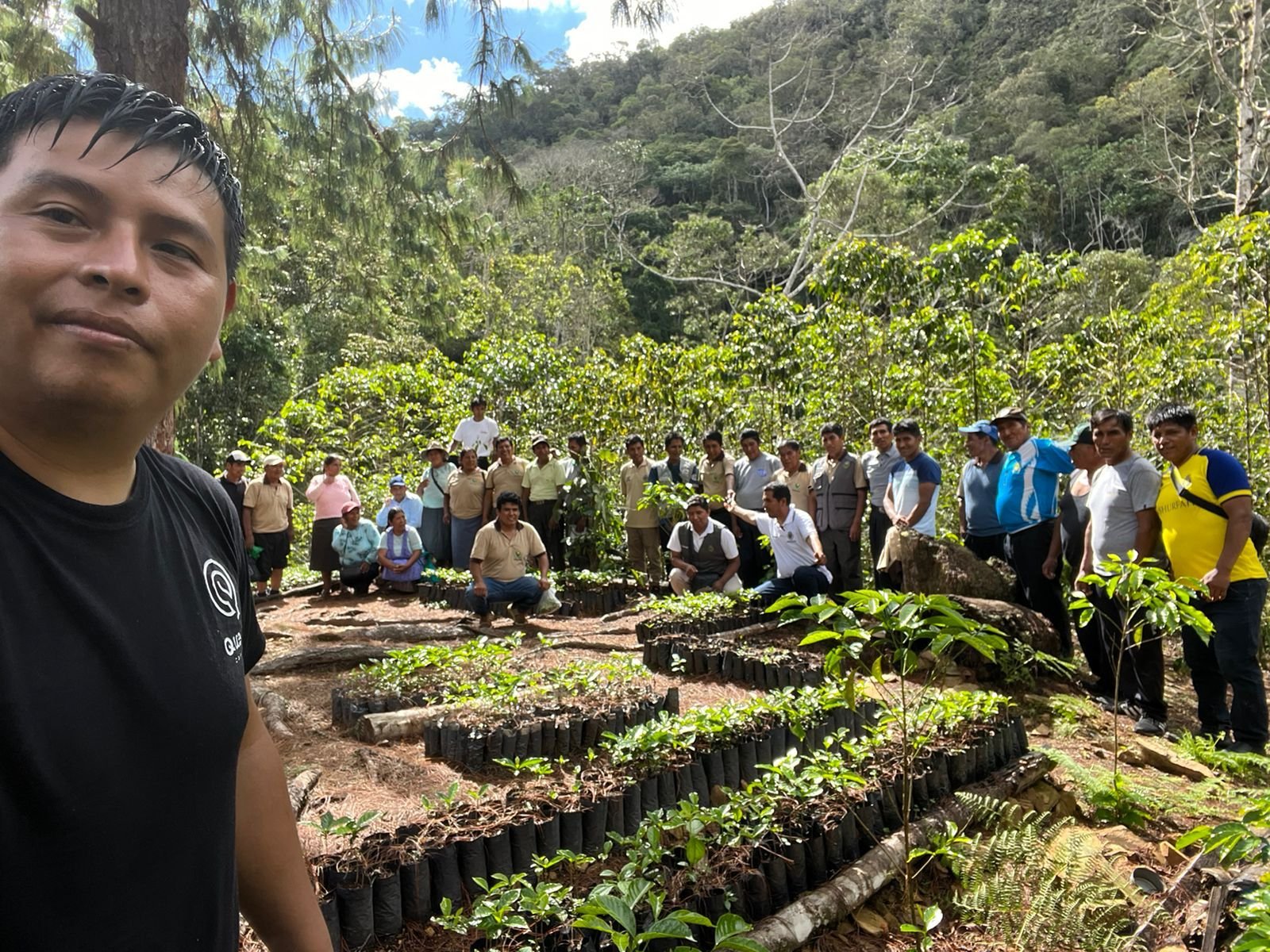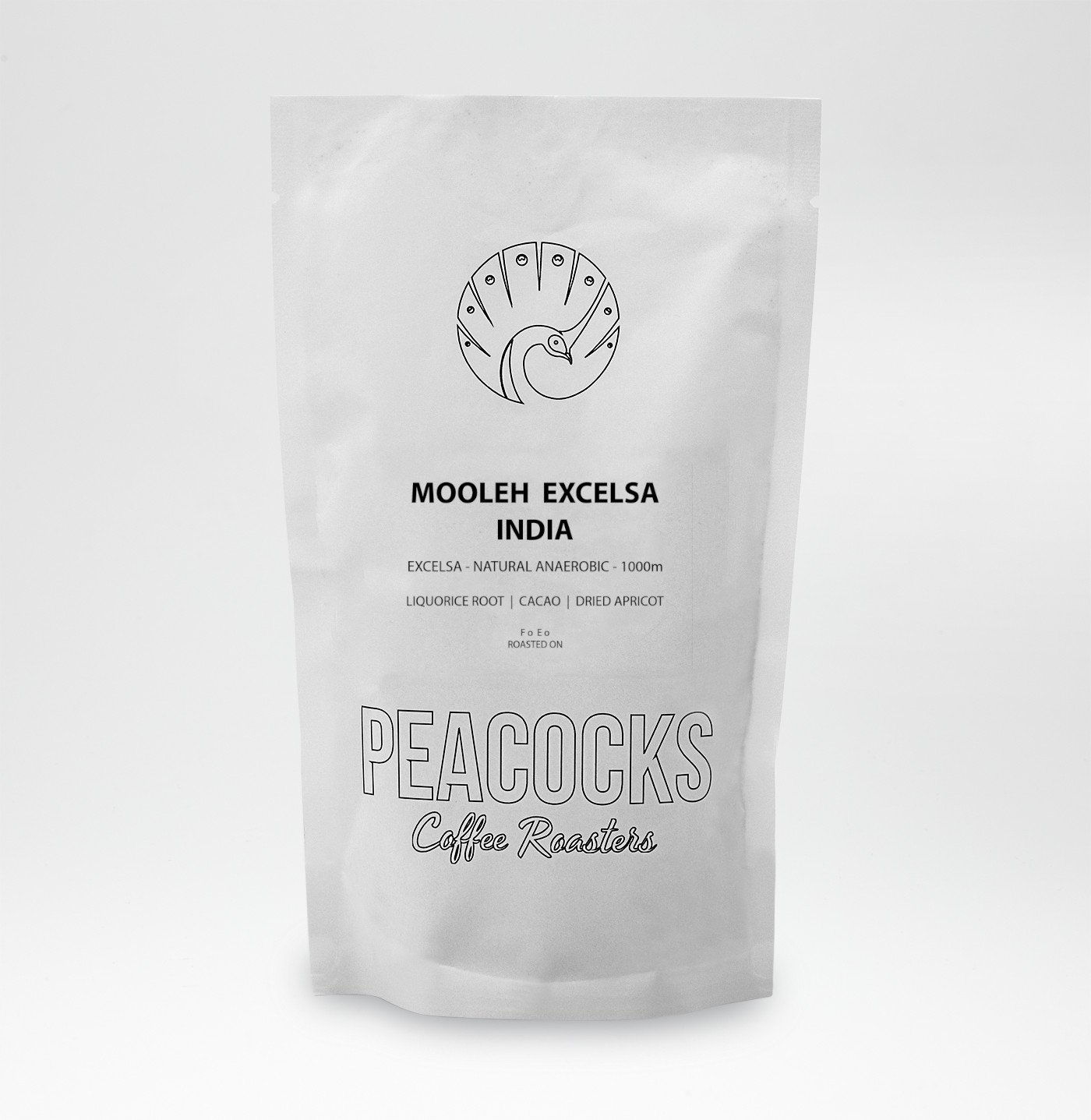 Image 1 of
Image 1 of


Edwin Quea - Perù
Edwin Quea of Finca Chiriloma is a Q Grader and judge of Cup of Excellence. The farm is part of a Peruvian Slow Food Community and practises land-conserving agriculture, with coffees shade-grown inside the forest. By adopting agroforestry practices the farm protects the environment and biodiversity and mitigates the effects of climate change.
Edwin Quea of Finca Chiriloma is a Q Grader and judge of Cup of Excellence. The farm is part of a Peruvian Slow Food Community and practises land-conserving agriculture, with coffees shade-grown inside the forest. By adopting agroforestry practices the farm protects the environment and biodiversity and mitigates the effects of climate change.
Edwin Quea of Finca Chiriloma is a Q Grader and judge of Cup of Excellence. The farm is part of a Peruvian Slow Food Community and practises land-conserving agriculture, with coffees shade-grown inside the forest. By adopting agroforestry practices the farm protects the environment and biodiversity and mitigates the effects of climate change.
Origin: Perù, Quellouno District
Producer: Edwin Quea Paco
Farm: Finca Chiriloma
Altitude: 1750-1950 masl
Variety: Red Bourbon
Process: Washed
Tasting Notes
LEMONADE / WHITE PEACH / HAZELNUT
This Red Bourbon lot was picked, pulped and fermented in water for 24 to 48 hours. Washed and dried on ventilated beds away from sunlight for 12 days. In the cup we think it tastes like lemonade, white peach and hazelnut.

AGROFORESTRY COFFEE
Edwin Quea Paco is the owner of Finca Chiriloma, Q Grader , judge of Cup of Excellence , founder of the Origen Quea Coffee Company, exporter and trainer.
Agroforestry coffee
On the farm the plots are shade grown, inside the forest, in the Alto Chirumbia San Martin area, Quellouno district, La Convencion, Cusco Region.
Altitude between 1750 to 1950masl.
The farm is part of a Peruvian Slow Food Community and practises land-conserving agriculture, protecting the environment and food security of the local community.
In the cultivation area and beyond, for a radius of at least 30 km, no pesticides or chemical fertilisers are used and the natural growth of the plants is favoured, in a way that will in time replace monoculture with polyculture.
The coffee plants grow among plane trees, fruit and avocados, yuca and cereals.
The soil, nourished with natural, mineral and vegetable fertilisers, does not undergo any chemical treatment and for a radius of at least 30 km, is not contaminated.
The Community of Alto Chirumbia, San Martin is part of that movement that is investing not only Peru, but also other countries of the Coffee Belt, gathering many producers around agroforestry, that agriculture that, in antithesis to monoculture, is regenerating not only the soil but also the heads of coffee producers and farmers more generally, involving the entire supply chain, right up to the consumer.
The challenges coffee producers face in mitigating the effects of climate change by adopting agroforestry practices are in addition to those they face in accessing credit in often economically unstable countries such as Peru. However, this seems to be the only way to protect the environment and biodiversity on the one hand, and to rebalance such an important source of income, from which producers have so far been excluded.
Forest agriculture is the rejection of monoculture, neo-colonialism, and the exploitation of people and soil; it is the proposal for the regeneration of agriculture and development model.
The processing
After the cherries are picked and first sorted, they are plucked, and the kernels, partially covered with mucilage, are left to ferment for 24 to 48 hours in tanks and after being washed, they are left to dry on ventilated beds protected from direct sunlight for 12 days.
Fermentation is done with minimal use of water, without immersion.
Selection and processing are carried out on site.
This is a restricted growing area, from the same community, but each producer's plot is individual and of a single variety.
The variety
Red Bourbon
“Bourbon is the most famous of the Bourbon-descended varieties. It is a tall variety characterized by relatively low production, susceptibility to the major diseases, and excellent cup quality. French missionaries introduced Bourbon from Yemen to Bourbon Island (now La Réunion)—giving it the name it has today—in the early 1700s. Until the mid-19th century, Bourbon did not leave the island. But beginning in the mid-1800s, the variety spread to new parts of the world as the missionaries moved to establish footholds in Africa and the Americas. The Bourbon variety was introduced to Brazil around 1860, and from there rapidly spread north into other parts of South and Central America, where it is still cultivated today. Here it became mixed with other Bourbon-related varieties, introduced from India as well as Ethiopian landraces. Nowadays, there are many Bourbon-like varieties found in East Africa, but none exactly match the distinct Bourbon variety that can be found in Latin America. Today in Latin America, Bourbon itself has largely been replaced by varieties that descend from it (notably including Caturra, Catuai, and Mundo Novo), although Bourbon itself it is still cultivated in El Salvador, Guatemala, Honduras, and Peru”.
From World Coffee Research





